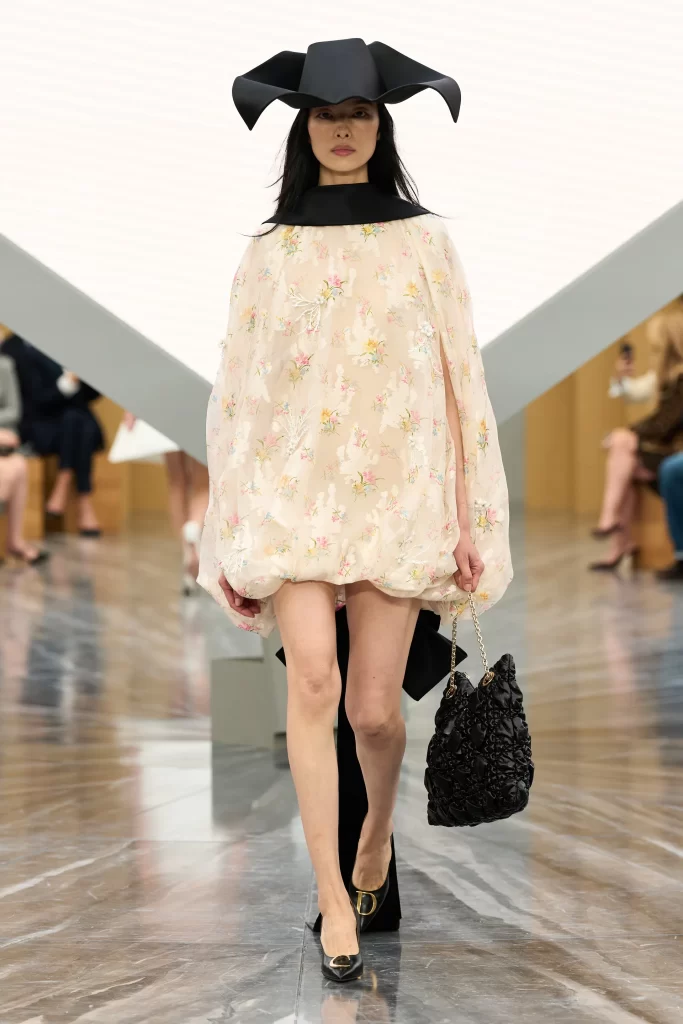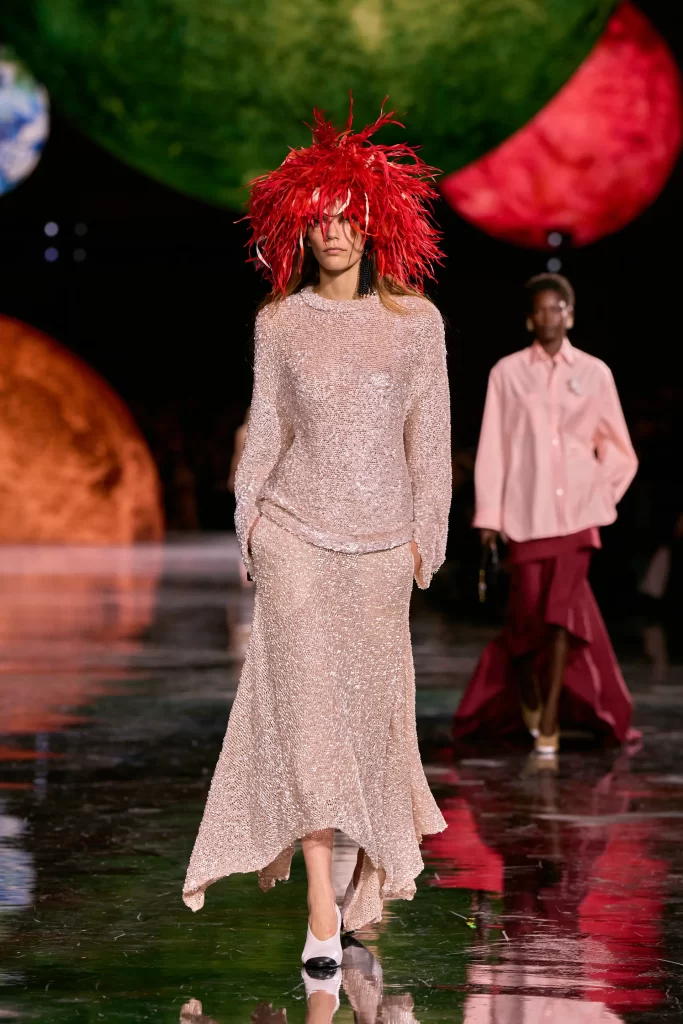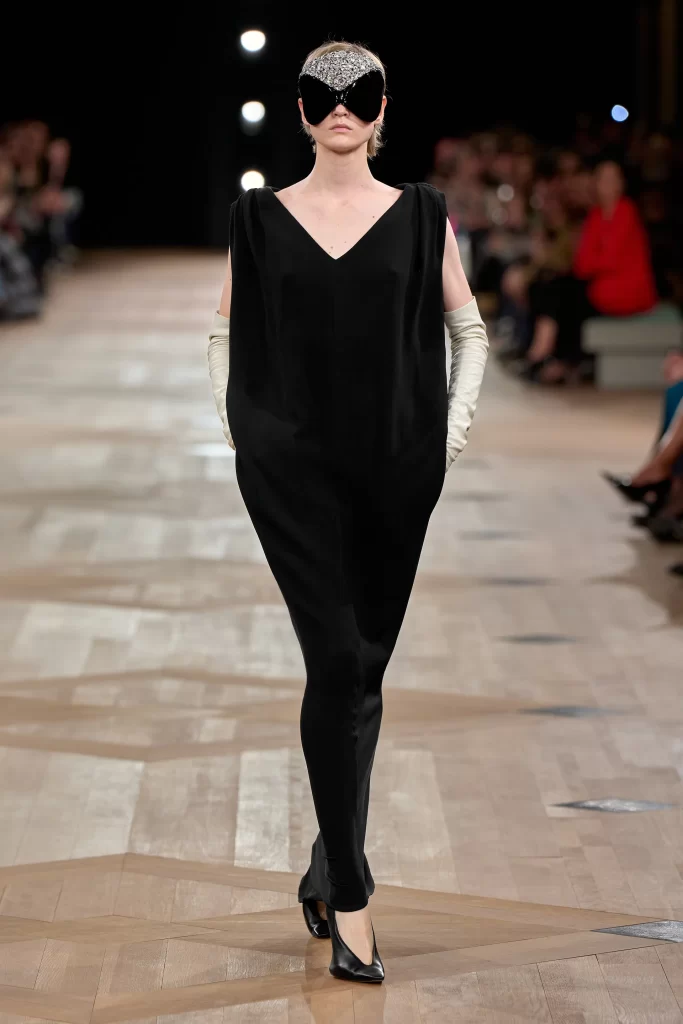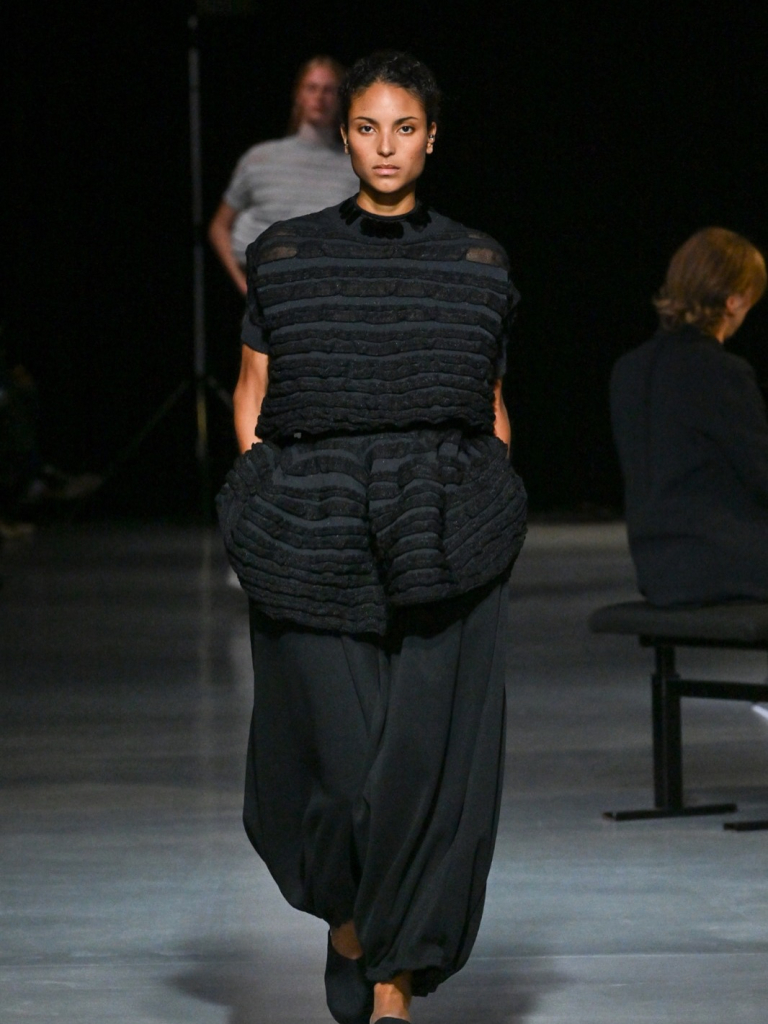Digital Fashion and Beauty Editor Eve Fitzpatrick
As the Spring/Summer 2026 season unfolded in Paris, the world’s fashion capital once again proved itself a stage for both reverence and rebellion. The week was marked by new beginnings, fresh creative leadership at some of the most storied maisons, and by a distinct tension between heritage and the hunger for change. From Dior’s cinematic homage to Chanel’s cosmic tailoring, each show offered a lens into where fashion stands now: nostalgic yet restless, introspective yet wildly experimental.

Christian Dior
For his first womenswear collection at Dior, Jonathan Anderson began with a love letter to the house’s past. The show opened with a short film by British documentarian Adam Curtis, weaving together archival Dior imagery, a visual tapestry of New Look silhouettes, runway moments, and couture ateliers.
When the lights lifted, Anderson’s interpretation of Dior’s ladylike DNA took form: silhouettes both structured and subversive, echoing Christian Dior’s romance while injecting Anderson’s signature minimalist eccentricity. Sculpted waists met unexpected volume; pristine tailoring was offset by playful proportions. The result was a collection that honored Dior’s elegance but questioned how that elegance might live in a modern, self-aware world.

Chanel
The Grand Palais, long the sacred home of Chanel, once again became the setting for an audacious reinvention. Matthew Blazy, in his highly anticipated debut as Chanel’s new creative director, looked to the stars. The set, an iridescent constellation of light and reflective panels, paid homage to Coco Chanel’s fascination with astronomy, translating celestial inspiration into texture and form.
Blazy’s collection returned to the essence of Chanel’s ethos: the merging of masculine structure and feminine ease. Boxy tweed jackets and oversized trouser suits replaced the daintiness of past seasons, asserting a new kind of cosmic power dressing. It was Chanel, still elegant, but now orbiting a bolder universe.

Balenciaga
At Balenciaga, Pierpaolo Piccioli’s first collection for the house was a study in restraint and reverence. Drawing from Cristóbal Balenciaga’s iconic 1957 Sack Dress, Piccioli stripped the silhouette to its essence, reinterpreting it through sculptural lines and unexpected textures.
Bold contrasts, matte and gloss, vivid color against shadowed neutral, infused vitality into the precision of the cuts. This was Balenciaga softened by Piccioli’s romantic sensibility: deeply wearable yet unafraid to assert its architectural legacy. The show was a reminder that quiet innovation can be as powerful as provocation.

Jean Paul Gaultier
Duran Lantink’s debut at Jean Paul Gaultier channeled the rebellious heartbeat of the brand’s archives into a vision for a new generation. The runway was a riot of energy, mesh tattoos, cone bras, latex, and metallic clubwear, reviving the house’s signature provocations with a wink toward the digital age.
Lantink’s ethos was unapologetically youthful and mischievous, crafting a collection that celebrated body confidence and street culture in equal measure. “Disturbing the grown-ups,” as Gaultier himself might have said, never looked so joyful, or so relevant.

Miu Miu
At Miu Miu, Miuccia Prada took one of fashion’s most functional garments, the apron, and transformed it into an emblem of female power and history. Described as a tribute to women “from factories to the home,” the collection balanced toughness with tenderness.
The runway oscillated between contrasts: ruffled black leather aprons juxtaposed with delicate sheer florals, and 1960s-inspired prints danced across modern, sharp silhouettes. The effect was a collage of eras, textures, and identities, an exploration of the domestic as both labor and luxury.

CFCL
CFCL continued to evolve its vision of “clothing for contemporary life”, favoring subtlety over spectacle. The brand’s SS26 collection resisted overt narrative, instead focusing on material innovation and form.
Rooted in modest silhouettes and sustainable knitwear, the collection invited reflection, on the seasons, on urban rhythm, on presence itself. CFCL’s work exists in whispers rather than shouts, offering a serene counterpoint to fashion’s chaos: clothes not for performance, but for living.

Torishéju
In a strikingly cerebral collection titled Dürer, Torishéju dismantled uniformity itself. Referencing the flood of modern stimuli, the information age’s “plague of ideas”, the designer created garments that fractured, mutated, and unraveled, visually articulating the struggle to stay coherent amid chaos.
Structured uniforms morphed into deconstructed hybrids; seams split into ribbons of thought. It was fashion as philosophy, a meditation on identity in an age of overstimulation, a fitting close to a Paris season obsessed with transformation.

